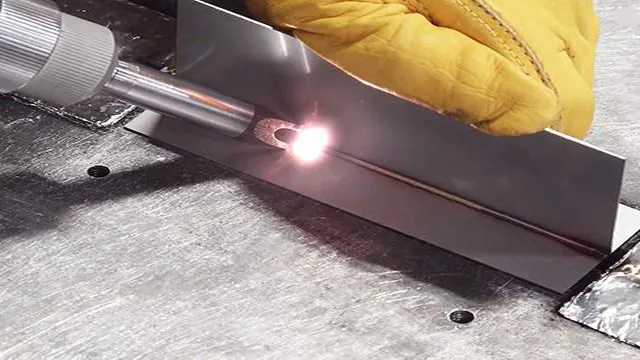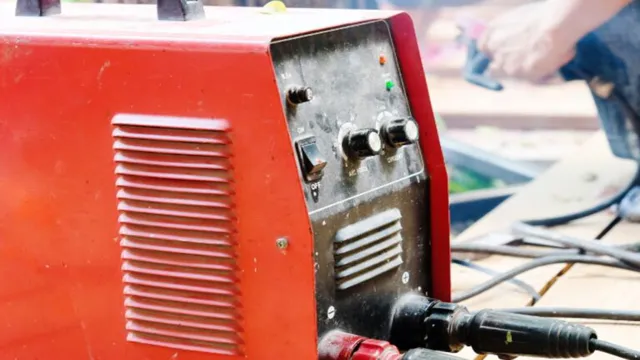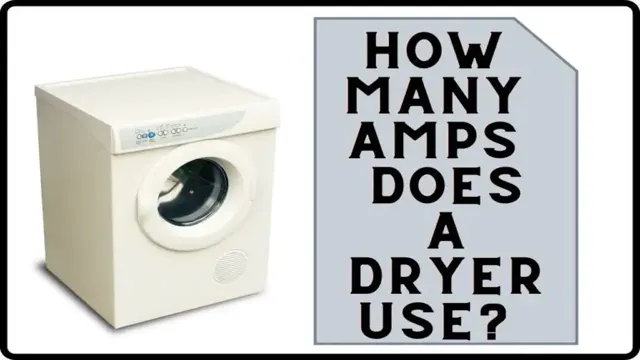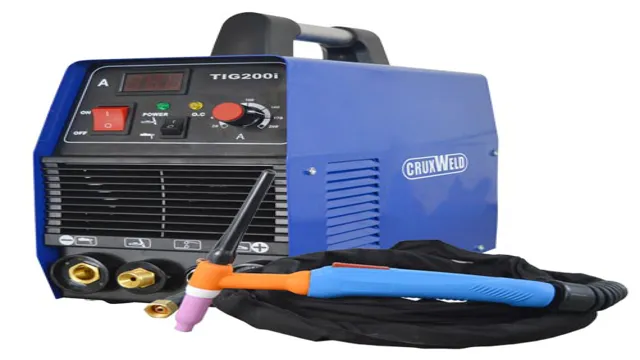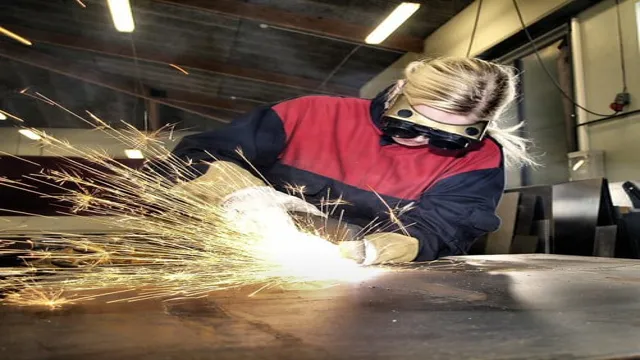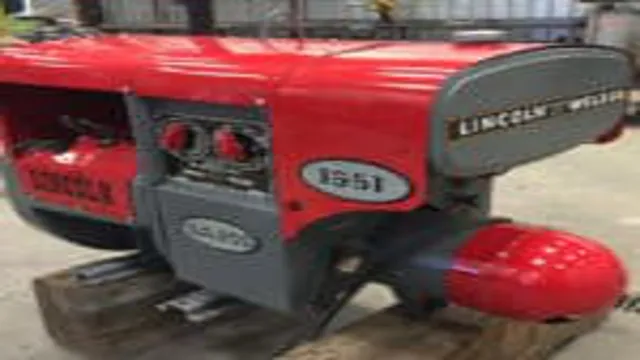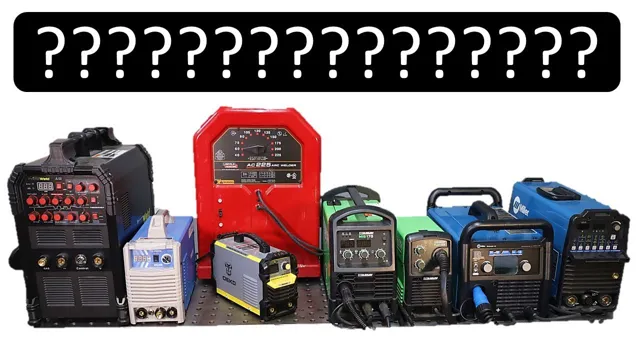What is a Welding Helmet Called? Learn about the Various Names and Types
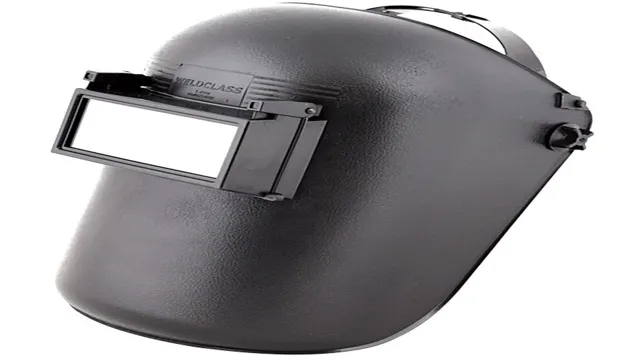
Welding helmets are an essential piece of safety gear for anyone who welds. They are designed to protect the welder’s eyes, face, and neck from the bright light and heat generated by the welding process. But welding helmets are not just for protection; they can also improve the quality of your welding work.
In this blog post, we will discuss the definition of welding helmets and their importance in welding. We will explore the different types of welding helmets available, the features you should look for in a welding helmet, and how to maintain your welding helmet to ensure it stays in good condition. Whether you are a professional welder or a DIY enthusiast, understanding the importance of a welding helmet is crucial for your safety and the quality of your work.
So, let’s dive in and learn more about welding helmets.
What is a welding helmet?
A welding helmet, also known as a welding mask or hood, is a type of protective headgear worn by welders during the welding process to protect their face, eyes, and neck from harmful ultraviolet and infrared radiation, as well as from sparks, slag, and debris. The helmet typically consists of a durable and heat-resistant shell made of materials such as fiberglass or polycarbonate, with a fixed or adjustable visor that can be flipped up or down. The visor usually contains a filter lens made of tinted glass or other materials that absorb the harmful radiation emitted by the welding arc, while allowing the welder to see the workpiece clearly.
Some welding helmets also come equipped with various features such as auto-darkening lenses, air-purifying respirators, and hearing protection to further enhance the safety and comfort of the welder. Overall, a welding helmet is a crucial piece of equipment for any welder, as it helps to prevent serious injuries and long-term health risks associated with welding.
Definition of a welding helmet
A welding helmet is a type of headgear used by welders to protect their eyes, face, and neck from hazardous welding fumes and intense ultraviolet (UV) and infrared (IR) light produced during the welding process. Welding helmets consist of a shell and a filter lens, which provides the necessary shading for the welder’s eyes. Additionally, they typically include adjustable headbands, ventilation options, and a protective shield to prevent flying sparks and debris.
As a welder, it’s critical to choose a welding helmet that meets safety and regulatory standards to protect yourself from potential harm while on the job. Without proper protection, a welder can suffer severe eye damage, burns, and permanent vision loss. Therefore, it’s essential to invest in a reliable and quality welding helmet to protect yourself.
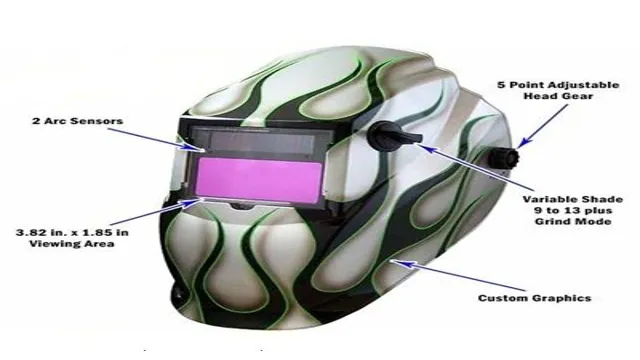
The importance of using a welding helmet
A welding helmet is a crucial piece of equipment used to protect the welder from harmful radiation and sparks that are produced during welding. The helmet covers the face, neck and ears, and is designed to provide maximum protection from flying debris, heat and light. Without a welding helmet, workers may expose themselves to the dangers of permanent eye damage or even blindness caused by the harmful UV rays emitted by the welding arc.
Additionally, welders are at risk of hearing loss due to the high noise levels generated by the welding process. A welding helmet acts as an effective barrier to prevent these hazardous events and keep the welder safe. It is essential to choose a high-quality welding helmet that fits properly and provides maximum protection.
By wearing a welding helmet, welders can focus on their work and complete projects safely and efficiently.
Types of Welding Helmets
A welding helmet is a necessary tool to protect the welder from the harmful effects of welding arcs, UV rays, and infrared radiation. It’s also known as a welding mask or a welding hood. There are different types of welding helmets available in the market, such as auto-darkening, passive, and flip-up helmets.
Auto-darkening helmets are equipped with sensors that quickly detect the arc, and within nanoseconds, they automatically darken the lens. Passive welding helmets have fixed-shade lenses that remain dark until the welder starts the arc. Flip-up helmets allow the welder to flip the helmet up for better visibility when not welding.
Each type has its own unique features that cater to the needs of different welders. No matter what type of welding helmet you choose, make sure it meets ANSI standards and provides adequate protection to your eyes and face.
Passive welding helmets
Passive welding helmets When you’re welding, protecting your eyes and face is essential, and passive welding helmets are an excellent choice for this job. These types of helmets transmit a fixed shade, which is ideal for a variety of welding applications. These helmets don’t require any kind of power source, which means they’re lightweight and easy to use.
One of the drawbacks of these helmets is that they don’t adjust to different welding processes, so you might need to change helmets depending on the type of welding you’re doing. The fixed shade also means that you’ll have to lift your helmet frequently to check your work, which can be inconvenient. However, if you’re doing a lot of repetitive welding, a passive welding helmet might be a good option.
These helmets are also typically much more affordable than their auto-darkening counterparts, so if you’re on a budget, they’re definitely worth considering. Overall, if you’re looking for a simple and affordable welding helmet, a passive welding helmet could be the right choice for you.
Auto-darkening welding helmets
Auto-darkening welding helmets are an essential piece of safety equipment for anyone involved in welding. There are two main types of welding helmets, passive and auto-darkening. Passive helmets have a fixed shade, typically between 10 and 13, and do not change when welding starts.
On the other hand, auto-darkening helmets have a variable shade that adjusts itself according to the job requirements. They provide greater visibility, productivity, and safety by adjusting the shade protection according to the arc. Auto-darkening lenses use a combination of solar power and battery power to control shade switching.
The solar cells and lithium-ion batteries allow the user to continue welding regardless of the lighting conditions. While passive helmets are cheaper, auto-darkening welding helmets are more convenient and versatile. Investing in a quality, auto-darkening helmet provides the best possible protection and comfort to welders.
How to Choose the Right Welding Helmet
When it comes to welding, safety should be your top priority. Welding helmets are essential gear that protects your face and eyes from harmful radiation and intense light. These safety helmets are commonly known as welding helmets or welding masks.
With several options available in the market, choosing the right one can be overwhelming. Here are a few factors you should consider when buying a welding helmet. Firstly, it should be comfortable to wear and provide ample head support.
Secondly, the lens size and shade number should be appropriate for the type of welding you will be doing. The lens should be durable and scratch-resistant with a clear view of the job you are working on. Lastly, some helmets come with additional features like a respirator or auto-darkening feature, which can make your welding job easier and safer.
By keeping these factors in mind, you can select a welding helmet that suits your needs and provides maximum protection. So before you start welding, make sure you have a high-quality welding helmet in hand, so you can complete your job safely and effectively.
Factors to consider when choosing a welding helmet
When it comes to welding, one of the most important safety tools is a welding helmet. But with so many choices available, how do you choose the right one? When selecting a welding helmet, there are a few factors to consider. First, think about the type of welding you will be doing.
If you will be doing a lot of overhead welding, you will want a helmet with a flip-up visor to prevent neck strain. Second, consider the level of protection you need. If you are doing high-amperage welding, you will want a helmet with a high shade number to protect your eyes.
Third, think about the type of lens you want. A standard lens is fine for most welding, but if you are doing specialized work such as TIG welding, you may want a lens with more color definition. Lastly, consider the fit and weight of the helmet.
You will be wearing it for extended periods, so you want something that is comfortable and not too heavy. By taking these factors into account, you can choose a welding helmet that fits your needs and keeps you safe on the job.
Tips for selecting a welding helmet that suits your needs
When it comes to welding, one of the most important pieces of equipment you’ll need is a welding helmet. But with so many different types and brands available, how do you know which one is right for you? First and foremost, it’s important to consider the type of welding you’ll be doing and the type of environment you’ll be working in. If you’ll be doing a lot of MIG or TIG welding, you’ll want to look for a helmet with a clear lens and good visibility.
For more heavy-duty welding, you’ll want something with a thicker and more durable shell. Another important factor to consider is comfort – you’ll be wearing your helmet for extended periods of time, so make sure it fits well and isn’t too heavy. Lastly, consider any additional features you might need, such as a respirator or auto-darkening lens.
By taking these factors into account, you can find a welding helmet that suits your needs and protects you from the dangers of welding.
Conclusion
After diving into the wild and wonderful world of welding, we have uncovered the answer to the age-old question: what is a welding helmet called? Like a trusty sidekick to a superhero, a welding helmet shields the welder from harm’s way. It’s the ultimate partner in crime-fighting against the perils of welding, whether it’s protecting eyes from intense light or keeping hair and skin safe from sparks and debris. So what do we call this heroic headgear? Some may say it’s a “hood,” others may call it a “mask,” but the prevailing term has become the “welding helmet.
” It’s the ultimate defender of welders everywhere, and the perfect knight in shining armor for any welding adventure.”
FAQs
What is a welding helmet?
A welding helmet is a type of protective headgear worn by welders to protect their eyes, face, and neck from welding arcs, sparks, and heat.
What are the different types of welding helmets?
The different types of welding helmets include auto-darkening helmets, passive helmets, and flip-up helmets.
What is an auto-darkening welding helmet?
An auto-darkening welding helmet is a type of helmet that has a lens that automatically darkens when an arc is detected, offering instant protection for the welder’s eyes.
How does an auto-darkening welding helmet work?
An auto-darkening welding helmet has a lens made of liquid crystal display (LCD) technology or electro-optical filter cartridges. The lens is activated by sensors that detect the arc from the welding process, and the shade level of the lens is automatically adjusted to protect the welder’s eyes.
What is a passive welding helmet?
A passive welding helmet is a traditional type of helmet that has a fixed darkened lens. The welder has to flip the helmet down to protect their eyes while welding.
What is a flip-up welding helmet?
A flip-up welding helmet is a combination of a passive helmet and an auto-darkening lens. The helmet has a fixed darkened lens, but the welder can flip it up to reveal an auto-darkening lens for setup and inspection work.
What are the safety standards for welding helmets?
The safety standards for welding helmets include ANSI Z87.1-2010, which specifies the minimum requirements for eye and face protection for welding and cutting operations. Additionally, helmets can be certified by the Occupational Safety and Health Administration (OSHA) or the Canadian Standards Association (CSA).

